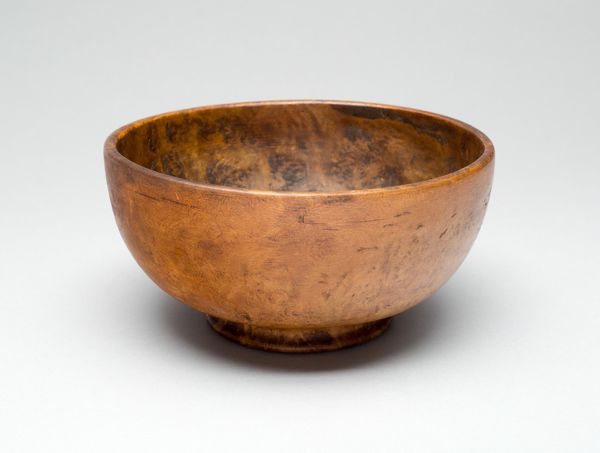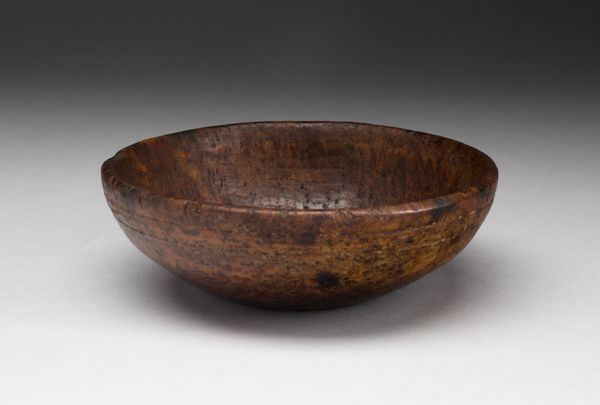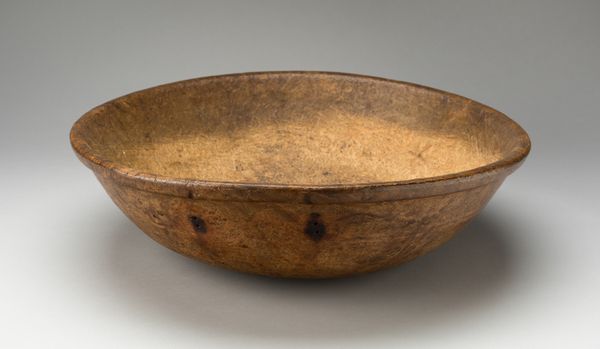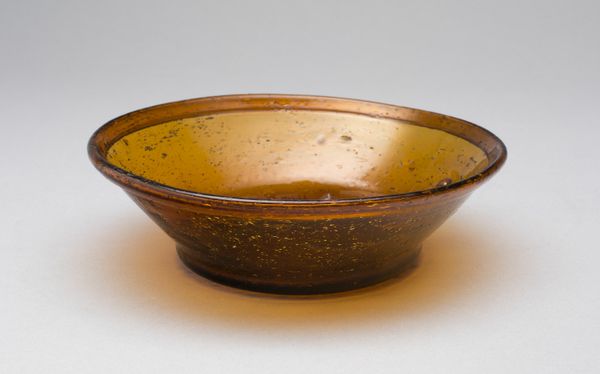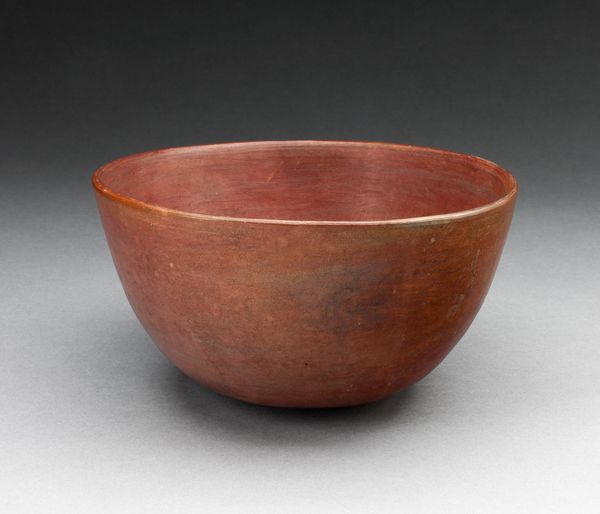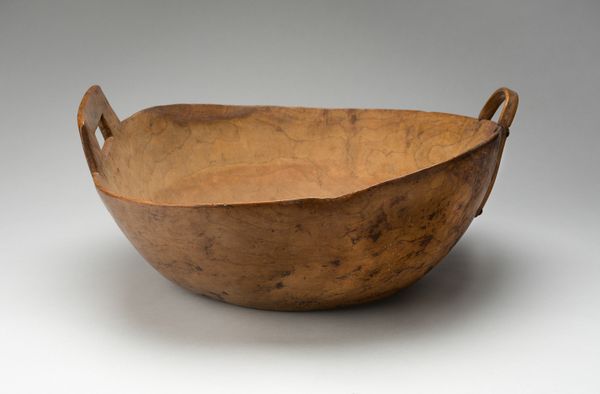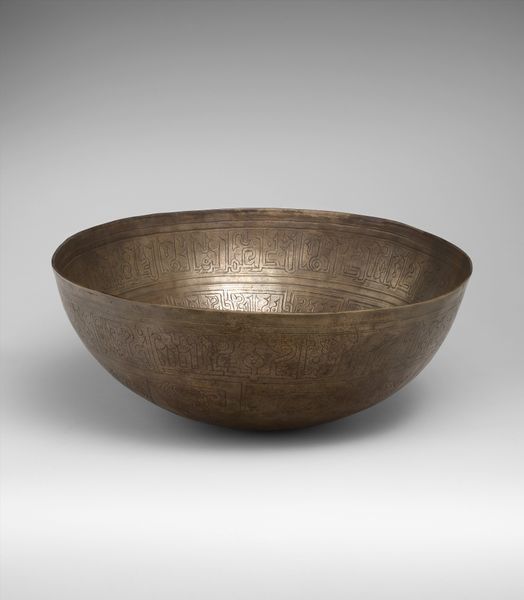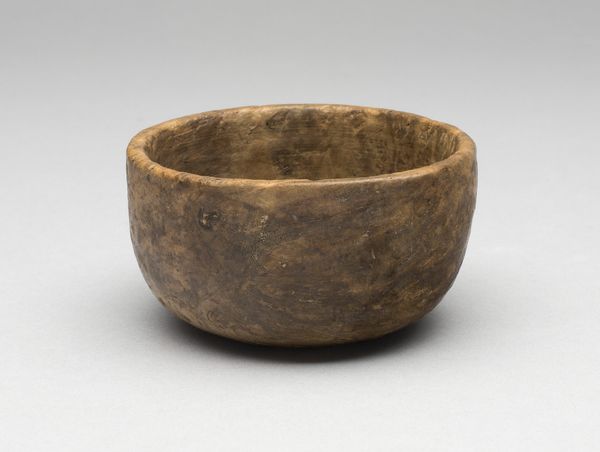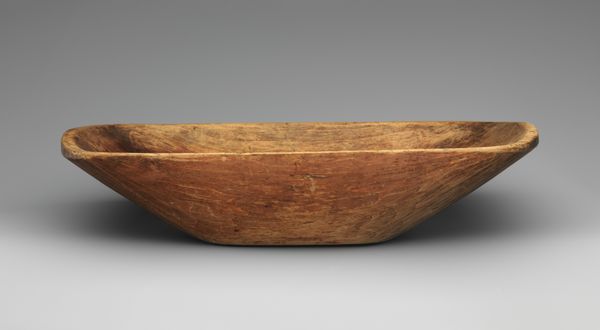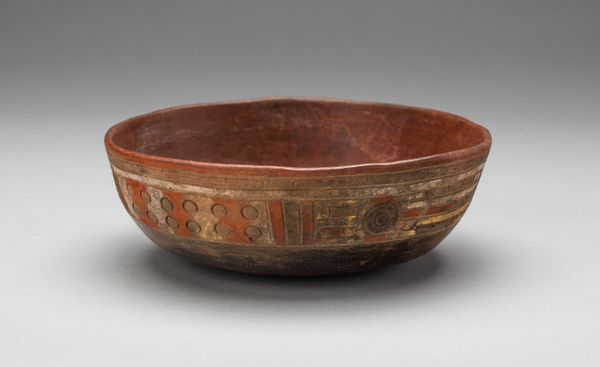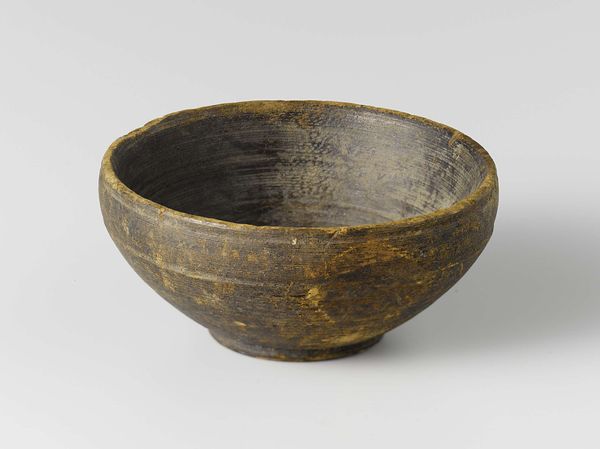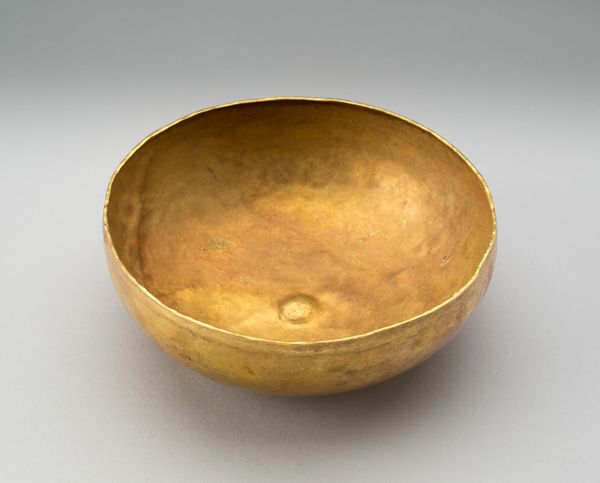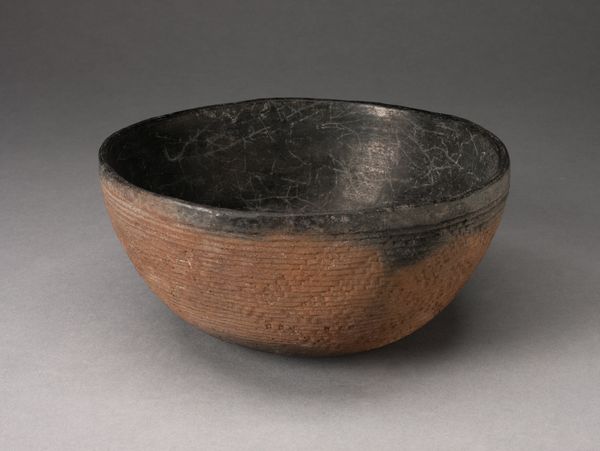
wood
#
wood
#
decorative-art
Dimensions: 25.4 × 65.4 cm (10 × 25 3/4 in.)
Copyright: Public Domain
Editor: Here we have a simple yet elegant "Bowl," crafted anonymously between 1800 and 1860, currently residing at The Art Institute of Chicago. Made of wood, it strikes me as both rustic and refined in its form. What catches your eye when you examine it? Curator: The formal analysis begins with noting the simplicity of form. The bowl's curvature invites contemplation on the concept of containment and negative space. Its spherical design is expertly realised, achieving perfect symmetry when observed across its axis, further accentuating the tension between its external volume and the internal void it defines. The grainy surface speaks to the raw materiality. Do you notice the texture's implications regarding its creation? Editor: I see how the grain suggests it's carved, perhaps from a single piece of wood? Does the simplicity hide any complexity? Curator: Precisely. This reductive simplicity, paradoxically, invites deep visual inspection. How would you characterize the bowl's surface treatment and its resultant aesthetic qualities? Observe how light and shadow interplay, thus modulating the appearance of the grain structure. The patina seems deliberately maintained to evoke...what? Editor: It looks like it has been aged. The bowl feels more significant, somehow. The form is timeless and yet also clearly old and touched by use. Curator: Indeed. By studying these fundamental aspects—shape, texture, materiality, tone and light play — we grasp an entry into the core expression intended, an engagement in formal dialog between artisan, art, and audience. What do you take from this dialog? Editor: I now see how studying the raw form and textures lets the 'idea' of the bowl become timeless! Thanks for this approach. Curator: My pleasure. A clear demonstration that pure visual scrutiny offers deep aesthetic insight.
Comments
No comments
Be the first to comment and join the conversation on the ultimate creative platform.
